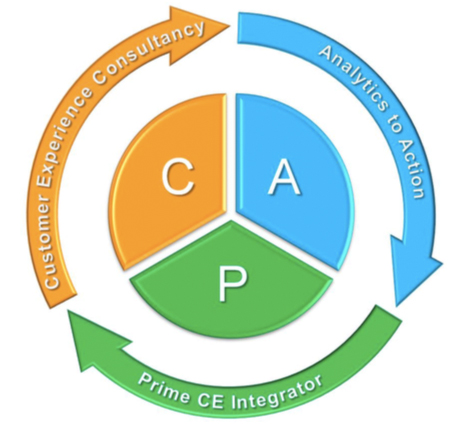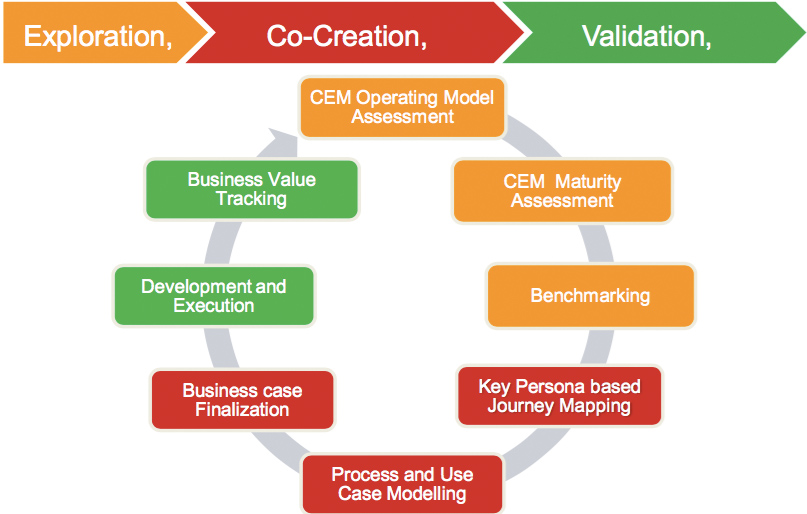Huawei Customer Experience Consulting White Paper
1. Introduction
A tectonic shift is taking place across the However, customers’ (both consumer and enterprise) expectations are now higher than ever before, driven by their experiences in other verticals, meaning that operators need to work every harder to engage, retain, and satisfy customers. At the same time competition from traditional and non-traditional market players, like Whatsapp, FaceTime etc means that margins are being squeezed.
The trend across the industry is for more and more operators to adopt CE as a strategic focus in order to preserve profitability. Many Equipment Providers emphasize probes and purely technological solutions to delivery CE. Huawei understands that technology is just one piece of a far more complex journey for an operator to make the transition from managing platforms to managing services. This is why Huawei are working with the C.A.P. portfolio, comprising three elements: CE Consultancy, Analytics to Action and Prime CE Integrator. Each of these three elements are required to work together to deliver excellent customer experience

Figure 1 The CAP model
This white paper looks at the C part of C.A.P. which lays out the Huawei CE consultant methodology designed to ensure that operators successfully become truly customer centric. Huawei’s CE Consulting offering is here to help operators develop and execute a holistic plan to transform their organizations, operations and technology to a customer centric model.
2. The Huawei methodology
Across the world large and small operators are making the same difficult change from network driven to customer driven thinking, all facing the same issue of changing while keeping the underlying business profitable. Huawei have worked with many of these operators across the globe and developed our 3 phase consulting model and the underling 8 steps required to transform organizations. Huawei is different from other CE consulting companies, as we really understand the telecoms business and don’t work with generic models.

Figure 2 The three stages
At the same time we understand that consulting models are just the starting point and it is only by really understanding the nuances of a particular operators business that we can make an impact.
3. The Exploration Stage
Across the world Huawei works with Operators of all sizes and levels of CE maturity. To get the very best out of CE consulting, both sides need to agree on an ambition level, a baseline and a competitive analysis or benchmarking. This is what we call our Exploration stage, where we work together with Operators to define what the starting point is for the CE journey.
3.1. CEM Operating Model Assessment
At the start of a Customer Experience journey it is important to collect the specific requirements from the different stakeholders in an Operator’s organization, having understood who needs to be involved. We must also understand what degree of change is possible, taking into account the pain points, aspirations and the span of sponsorship across organizational silos.
3.2. CEM Maturity Assessment
Based on the TMF Maturity assessment model Huawei performs a review of the organization’s readiness for CEM Transformation. In this phase we evaluate the organization’s current maturity along six dimensions – Strategy, Organization, People, Processes, Metrics, and Tools & Systems.
3.3. Benchmarking Assessment
To understand what can best be changed we need to understand what other operators have achieved in similar situations. Huawei have anonymized benchmark data from transformation partners worldwide. By comparing key metrics with benchmarking data we can understand where interventions will have the greatest impact.
4. The Co-Creation Phase
Working closely with key operator stakeholders, Huawei’s experts and selected third parties will select and develop use cases to target specific needs and requirements. Since Customer Experience is key to operators growth we must work together to develop the very best use case for that market at that point in time.
4.1. Persona-based Journey Mapping
Huawei have developed a standard suite of CE personas, which can be refined through research with operators to better understand the customer experience. Alternatively we can use an existing set of personas to explore the ways in which different customer segments interact with the operator. We also need to understand what journeys will bring the maximum return to the operator from an intervention.
4.2. Process and Use Case Modeling
Working together, with trusted third parties when required, we can define how customer specific use cases should be developed. Use cases may include process or organizational changes, new software modules training etc. Often use cases are based on previously deployed use cases, but we also develop completely new use cases when required. A key aspect of many use cases ishow the resulting information is displayed and understood by staff at levels. This should not be overlooked when seeking to is driving change: CE dashboards at all levels are increasingly a key element of customer experience transformations.
4.3. Business Outcome Calculation
The ultimate test for any proposed transformation in Customer Experience is how this impacts profitability. Huawei’s business outcome calculator is the foundation for the TMF CE calculator. We use inputs from the earlier phase to understand what can be achieved per use case and what impact that has on an operators business. Using clear business models supports a transparent decision making process about what uses cases to prioritize.
5. The Validation Stage
It is only after the implementation of an intervention like a new process or use case that value becomes apparent. During this stage all parties must work closely together to maximize return and ensure the planned outcomes are achieved.
5.1. Development and Execution
Using Huawei’s unique multi-disciplinary research in Psychology, Sociology, Management Systems, Economics and Mathematics, we develop, customize and localize use cases to match local market conditions using real data to produce results that can be validated immediately. For Organizational changes such as NOC to SOC transformation Huawei have the longest reference list globally.
5.2. Business Value Tracking
Once use cases are deployed or other interventions implemented we establish a process to routinely measure the business value and track what is achieved against what was planned. In that way we have complete transparency about the final result of an intervention and an excellent starting point for the next cycle.
6. Continuous Improvement
CE transformation is a multi-year endeavour which is why Huawei’s methodology is built around a long term trusted partnership model. Huawei’s unique Explore, Co-Create and Validate model is designed to be a foundation for the required multiyear partnership.

Figure 3 The 8 steps
7. Conclusion
Huawei is proud to offer this closed loop consultancy model to help operators make the transition from network driven organizations to customer driver businesses. Operators who have used this service tell us it that is very valuable. Or as one of our major European operators said: By far the most comprehensive consultancy report, we have ever received” If you have any questions about how Huawei’s CE consulting can help your organization please contact your local Huawei representative office.